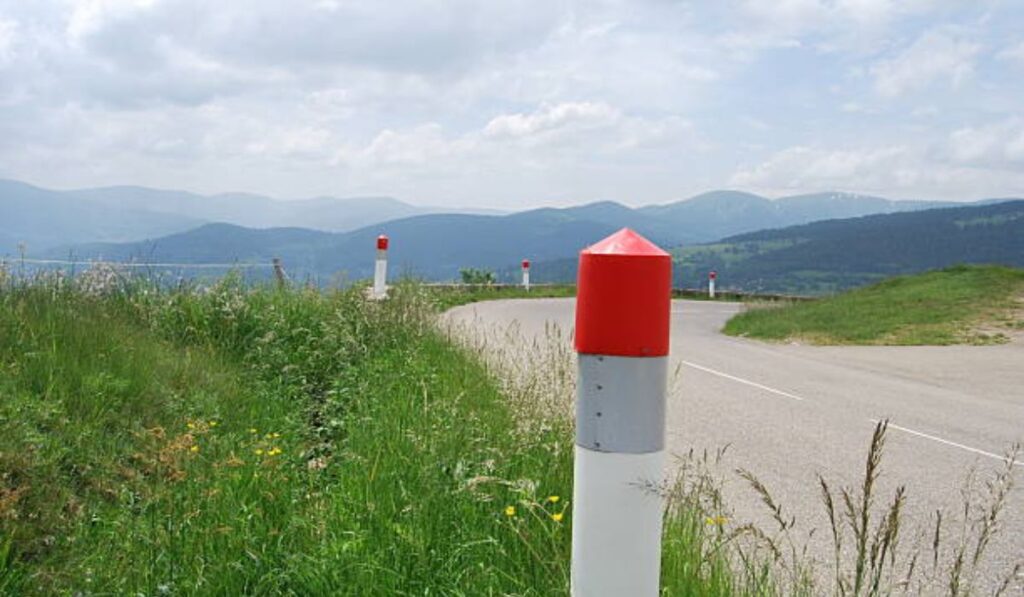Roadside emergency marker nyt When you find yourself in a situation where your vehicle breaks down or you experience a flat tire, having a roadside emergency marker can make all the difference. The roadside emergency marker is a critical device designed to ensure that you can safely signal for help, alerting other drivers of your situation. In this article, we will examine the importance of this device, how to properly use it, and the laws surrounding its use for safety on the road.
What Is a Roadside Emergency Marker?
A roadside emergency marker nyt also known as a roadside emergency signal or emergency warning device, is a visual signal to alert oncoming traffic that a vehicle is stopped and may pose a hazard. These markers can come in various forms, including reflective triangles, flares, or LED lights. They are essential tools for anyone who drives, providing peace of mind that assistance can be called and that other drivers will see you.
Importance of Roadside Emergency Markers
The primary purpose of a roadside emergency marker nytr is safety. When a driver is stranded on the side of the road, they may be at risk from passing vehicles. By using an emergency marker, you signal your presence to other drivers, which can help prevent further accidents. This is crucial not only for the driver experiencing issues, but also for other motorists on the road.
Emergency markers are particularly important at night or in low visibility conditions, such as rain or fog. The bright colors and reflective materials make these devices highly visible, reducing the risk of an accident.
Types of Roadside Emergency Markers
- Reflective Triangles: These are typically the most common roadside emergency markers. They consist of three triangular panels that can be set up to create a large, visible signal for oncoming traffic. Most states require drivers to carry at least one reflective triangle in their vehicles.
- Flares: Flares are another option. They generate light and can be ignited to create a bright burning signal. However, they must be handled with care, as they can be a fire hazard.
- LED Lights: Some modern emergency kits include LED lights that are battery-operated or rechargeable. These lights can flash in various patterns, making them highly visible in low light conditions.
- Roadside Warning Signs: Some drivers opt for collapsible warning signs that display messages like “Emergency” or “Breakdown.” These signs are easy to store and can be set up quickly.
How to Properly Use a Roadside Emergency Marker
When your vehicle breaks down, the first step is to ensure your own safety. Here’s how to correctly use a roadside emergency marker:
- Pull Over Safely: If you can, move your vehicle to the side of the road. If possible, park on a flat, stable surface away from traffic to employ the marker safely.
- Turn on Hazard Lights: Before exiting your vehicle, turn on your hazard lights. This alert is crucial as it signals to others that your vehicle is not operational.
- Set Up the Marker: Depending on the type of emergency marker you use, position it at least 100 feet behind your car or in a location where it’s clearly visible to oncoming traffic. Follow the manufacturer’s instructions for specific setups.
- Stay Inside Your Vehicle: Unless it’s safe to exit the vehicle, remain inside with your seatbelt fastened. This is often the safest option until help arrives.
- Wait for Assistance: If you have a phone and it’s safe to use it, call for roadside assistance.
Legal Requirements for Emergency Markers
Different states have different requirements regarding roadside emergency markers. Most states mandate that drivers carry emergency signaling devices in their vehicles. Check your local regulations to be sure you are compliant. Some states may have specific rules about the type of markers that are required or recommended.
Best Practices for Roadside Emergencies

- Carry a Safety Kit: Always have a standard roadside emergency kit in your vehicle. This should include an emergency marker, flares, a flashlight, first aid supplies, and basic tools.
- Check Your Equipment: Regularly inspect your roadside emergency marker and other safety tools. Make sure they are functioning properly and have not expired.
- Educate Yourself: Learn basic vehicle maintenance skills. Knowing how to change a tire, check oil, or jumpstart a battery can increase your safety and confidence while driving.
- Plan Your Route: Before you embark on a long trip, plan your route. Being familiar with the area can help you out in case of an emergency.
- Stay Calm: In an emergency, panic can lead to irrational decisions. Take a deep breath and assess the situation logically.
Enhancing Visibility: Extra Tips
When using a roadside emergency marker, visibility can be further enhanced:
- Use Multiple Signals: If you have flares or additional markers, use them in conjunction with your reflective triangles. This creates a larger visible area.
- Choose the Right Time: Whenever possible, try to break down during daylight hours. However, if it’s dark, make sure your lights and markers are as visible as possible.
- Wear Reflective Clothing: If you need to exit your vehicle, wearing reflective clothing can significantly improve your visibility.
- Inform Fellow Passengers: If traveling with others, ensure everyone understands safety protocols during an emergency.
Conclusion
A roadside emergency marker nyt is an essential device for sanity and safety on the road. Whether you use reflective triangles, flares, or LED lights, being prepared can save lives. Proper use and adherence to local regulations will ensure you remain safe and visible in times of need.
The best defense against roadside emergencies is preparedness. Always carry appropriate emergency markers and make sure they are easily accessible. Remember, your safety is your priority. With the right approach, you can minimize risks and effectively handle roadside emergencies when they arise.
FAQ about Roadside Emergency Markers
Q1: What is a roadside emergency marker?
A roadside emergency marker is a sign or device that indicates the presence of an emergency situation, such as an accident, vehicle breakdown, or hazardous conditions on the road. These markers can help drivers alert authorities and provide a means of location for emergency responders.
Q2: Why are roadside emergency markers important?
They serve as a quick point of reference for drivers and emergency services. In emergencies, they improve response times and help ensure safety by warning other drivers about potential hazards ahead.
Q3: Who is responsible for placing roadside emergency markers?
Typically, government agencies and transportation departments are responsible for the placement and maintenance of roadside emergency markers. They often follow established guidelines to ensure consistency and visibility.
Q4: How can I report a missing or damaged roadside emergency marker?
You can usually report such issues to your local or state transportation department through their website or a dedicated hotline. Providing exact location details helps them address the issue promptly.
Q5: Are there regulations regarding the visibility and positioning of these markers?
Yes, there are specific regulations regarding the visibility, size, and positioning of roadside emergency markers to ensure they are easily seen by motorists and effectively communicate the intended message.










































